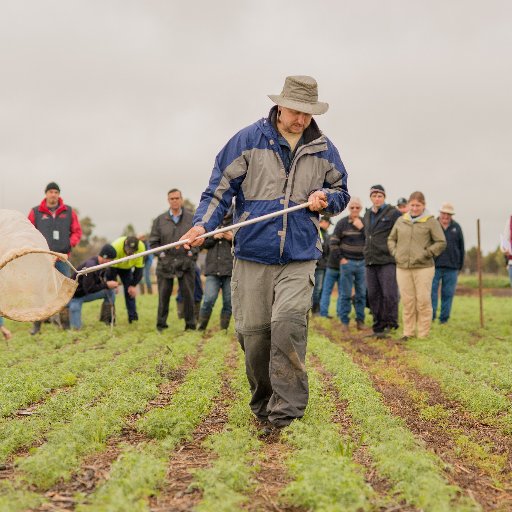Food From the Two Clouds
- Dr. Jonathan Lundgren

- Dec 26, 2020
- 3 min read
12/26/20
Dr. Jonathan Lundgren
Director of Ecdysis Foundation
Blue Dasher Farm
Estelline, South Dakota

I recently stared at a fork in the road. Two clouds emerged before me, and the only way to survive was to choose one in which to live. One of the clouds was broad and high, billowing as it tried to discover itself. The other was held low and narrow by convention and fear.
There is an incentive for being regenerative right now. Perception of regenerative is positive, and many are trying to own this definition. Some motivations are pure, and some are not. Recently even agrichemical companies decided to start marketing themselves as part of the regenerative movement.
Not so long ago, but in the infancy of the movement, organizations decided to define what regenerative agriculture is. Their strength was marketing, and they got dozens of companies and stakeholders to agree to their definition.
Others decided that regenerative agriculture was primarily about carbon sequestration. I ask myself, “can we eliminate carbon emissions and still destroy the planet?” The answer is yes. Our solutions to climate change need to be deeper than looking at carbon in a silo.
Even science has recently taken a crack at defining what regenerative agriculture is. It looked at numerous definitions and tried to find consilience in the words of the definition. Soil health, biodiversity, economics all are consistent parts of the definition of regenerative agriculture.
Naming a thing does not always make it true. And while the name is necessary, it wasn’t the goal of any of these efforts to determine whether an actual farm is regenerative.
To do this, others yet created great lists of practices, a clock tower of dozens of pages of questions that a farmer could answer to evaluate whether their operation is regenerative. Behind a desk, intelligent people tried to think of every cog and gear and make sure that each was accounted for to ensure that the pieces fit together into an ideal regenerative farm. Sometimes we focus so much on the mechanisms that we forget to ask whether the timepiece tells time.
I have my opinions about the politics, certification, and marketing that ensnare the defining of regenerative food systems. This aside, scientists and society need to be able to accurately partition regenerative farms from other types of farms.
The approach needs to balance precision with function. It needs to be reproducible and accurately reflect the desired outcomes of a regenerative system. But it also needs to be simple and transparent enough to use.
In 2018, Claire LaCanne and I came up with a simple scoring system to distinguish regenerative and conventional cropland. It was followed in 2019 by Jacob Pecenka and my similar efforts to partition regenerative and conventional rangelands.
In both cases, we selected a simple palette of fewer than ten yes-or-no questions about practices used on a farm. These practical questions are each indicators of key principles that are generally agreed to be the pillars of regenerative food systems. Regenerative practices are scored a 1, and conventional practices are scored a 0, and based on their responses, each farm is given a score. We have used this approach to characterize hundreds of farms around the country.
Recently, we took data from four of our studies that used this approach to see whether implementing more regenerative practices (and attaining a higher score) correlated with important regenerative outcomes. Soil carbon and geochemistry, water infiltration, soil microbial, plant, and invertebrate communities, profit, yield, and nutrient density.
Invariably, higher regenerative scores were positively related with carbon sequestration, water balance, biodiversity conservation, and profitability of the farms. Our scoring system works well, and hopefully will be able to guide the discussion of what regenerative farms are.
The end result of this attempt to define the two systems produced two clouds of data, based on the number of regenerative practices. There were no established farms that only employed a few regenerative practices.
As I looked at the space between these two groups of farms, it underscored the way ahead. We cannot live in the space between for long. I believe that those farms in the middle of these two clouds quickly burn their fuel until the flames falter. They must choose.
Some will choose to replace what they have lost with chemicals and technology-driven complacency. This has unraveled for too long. They dwell in the cloud on the left.
Those that choose the regenerative path select to reconnect themselves with the life on their farm in knowledge and resourcefulness. I have yet to see a plateau for what they are able to achieve in the natural resources, profitability and resiliency of their farms. This right cloud is swelling to a thunderhead that envelopes our future.





Comments